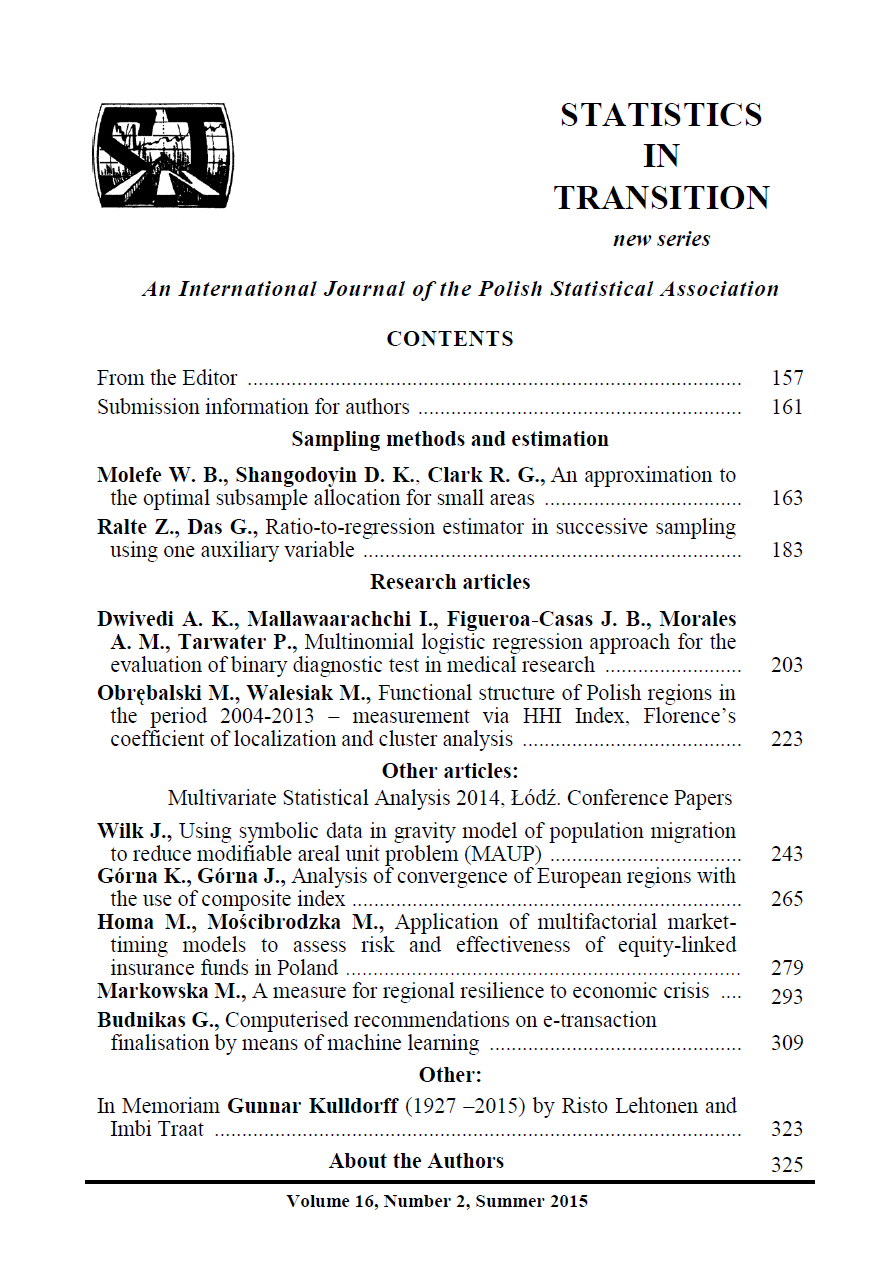ARTICLE
ABSTRACT
Convergence study is related to several crucial issues. One of those problems is an individual character of every region in the selected area, as the regions established accordingly to the European classification system NUTS-2 are not homogeneous. Therefore, while analysing convergence in the European Union, regions with extremely dissimilar characteristics (for example GDP per capita) are taken under consideration. Absolute ß-convergence means that all of the investigated regions tend to the same level of economic growth. Thus, among the regions with highly differential amounts of the examined variables the convergence hypothesis can be rejected. Due to the heterogeneity in the conducted investigation a classification based on the composite index will be used so that the convergence clubs could be established. Several approaches to convergence will be used according to those regimes. Moreover, there will be an attempt to indicate the determinants that differentiate the selected regions, such as: expenditure on R&D, HRST, quantity of patents, employment, participation of people in tertiary education among all employees. This will allow the analysis of conditional ß-convergence to be conducted. In the investigation some methods and models offered by the spatial statistics and econometrics will be used. There are empirical proofs that geographical location has a great impact on the processes of economic growth. Consequently, spatial dependencies will be analysed as well.
KEYWORDS
economic convergence/divergence, spatial autocorrelation, spatial econometric model, composite index.
REFERENCES
ABREU, M. H., DE GROOT, L. F., FLORAX, R. J. G. M., (2005). Space and Growth: A Survey of Empirical Evidence and Methods, Région et Développment, Vol. 21, pp. 13-14.
BARRO, R. J., SALA-I-MARTIN, X., (1995). Economic Growth, New York: McGraw-Hill,.
CAURESMA, J. C., FELDKIRCHER, M., (2015).,Spatial Filtering, Model Uncertainty and the Speed of Convergence in Europe, Journal of Applied Econometrics, Vol. 28, Issue 4, pp. 720–741.
ELHORST, P., PIRAS, G., ARBIA, G., (2010). Growth and Convergence in a Multiregional Model with Space-Time Dynamics, Geographical Analysis, Vol. 42, pp. 338–355.
ERTUR, C., KOCH, W., (2007). Growth, Technological Interdependence and Spatial Externalities: Theory and Evidence, Journal of Applied Econometrics, Vol. 22, pp. 1033-1062.
FINGLETON, B., (2001). Equilibrium and economic growth: spatial econometric models and simulations, Journal of Regional Science, Vol. 41, No. 1, pp. 117-147.
FINGELTON, B., (2004). Regional Economic Growth and Convergence: Insight from a Spatial Econometric Perspective, in: L. Anselin, R. J. G. M. Florax, S. J. Rey (eds.), Advanced in Spatial Econometrics. Methodology, Tools and Applications, Springer, pp. 397-432.
FINGLETON, B., LÓPEZ-BAZO, E., (2006). Empirical growth models with spatial effects, Regional Science, Vol. 85, No. 2, pp. 177–198.
GÓRNA, J., GÓRNA, K., SZULC, E., (2014). A ß-convergence Analysis of European Regions. Some Re-specification of the Traditional Model, Models and Methods for Analysing and Forecasting Economic Processes. Theory and Practice (edited by Józef Pociecha), Cracow, pp. 83-97.
LE GALLO, J., ERTUR, C., BAUMONT, C., (2003). A spatial econometric analysis of convergence across European Regions, 1980-1995. In B. Fingleton (ed.), European Regional Growth. Advances in Spatial Science. Springer Verlag, Berlin Heidelberg, pp. 99–129.
MANKIW, N. G., ROMER, D., WEIL, D., (1992). A Contribution to the Empirics of Economic Growth, Quarterly Journal of Economics, Vol. 107, pp. 407-437.
REY, S. J., JANIKAS, (2005). Regional Convergence, Inequality, and Space, Journal of Economic Geography, Vol. 5, pp. 155-176.
REY, S. J., LE GALLO, J., (2009). Spatial analysis of economic convergence, in Mills T. C., Patterson K. (eds.), Palgrave Handbook of Econometrics, Volume II: Applied Econometrics, Palgrave MacMillan, New York, pp. 1251-1290
